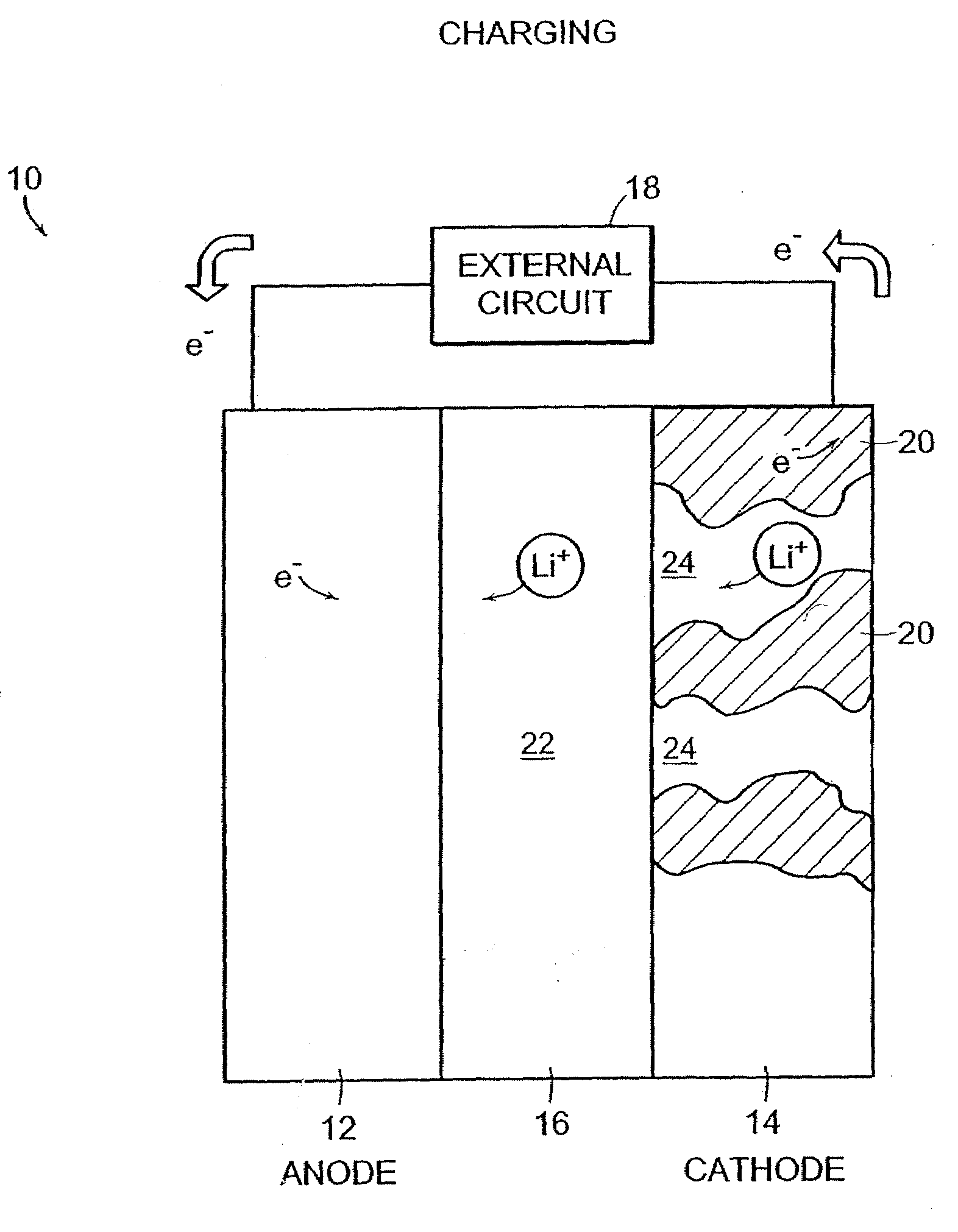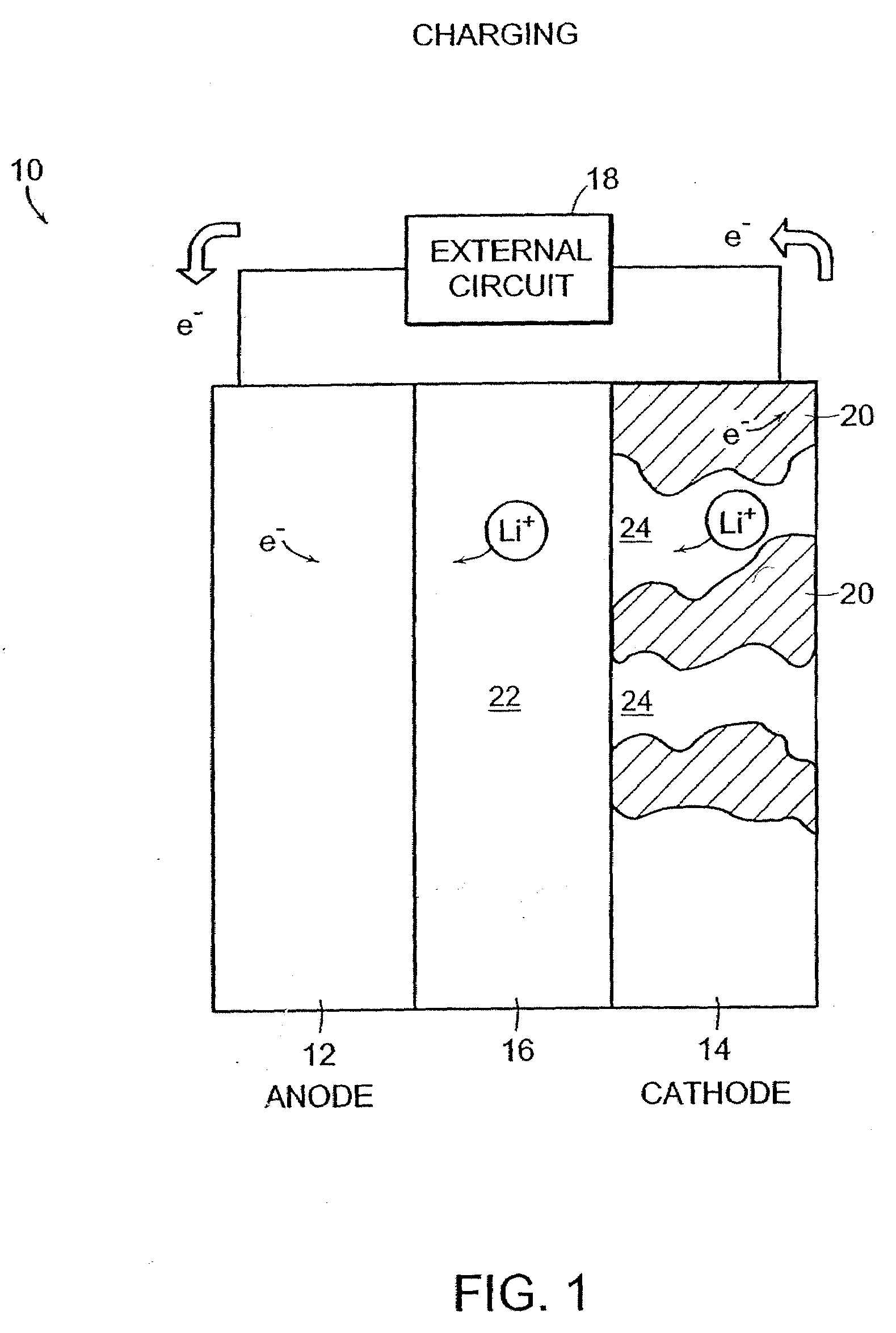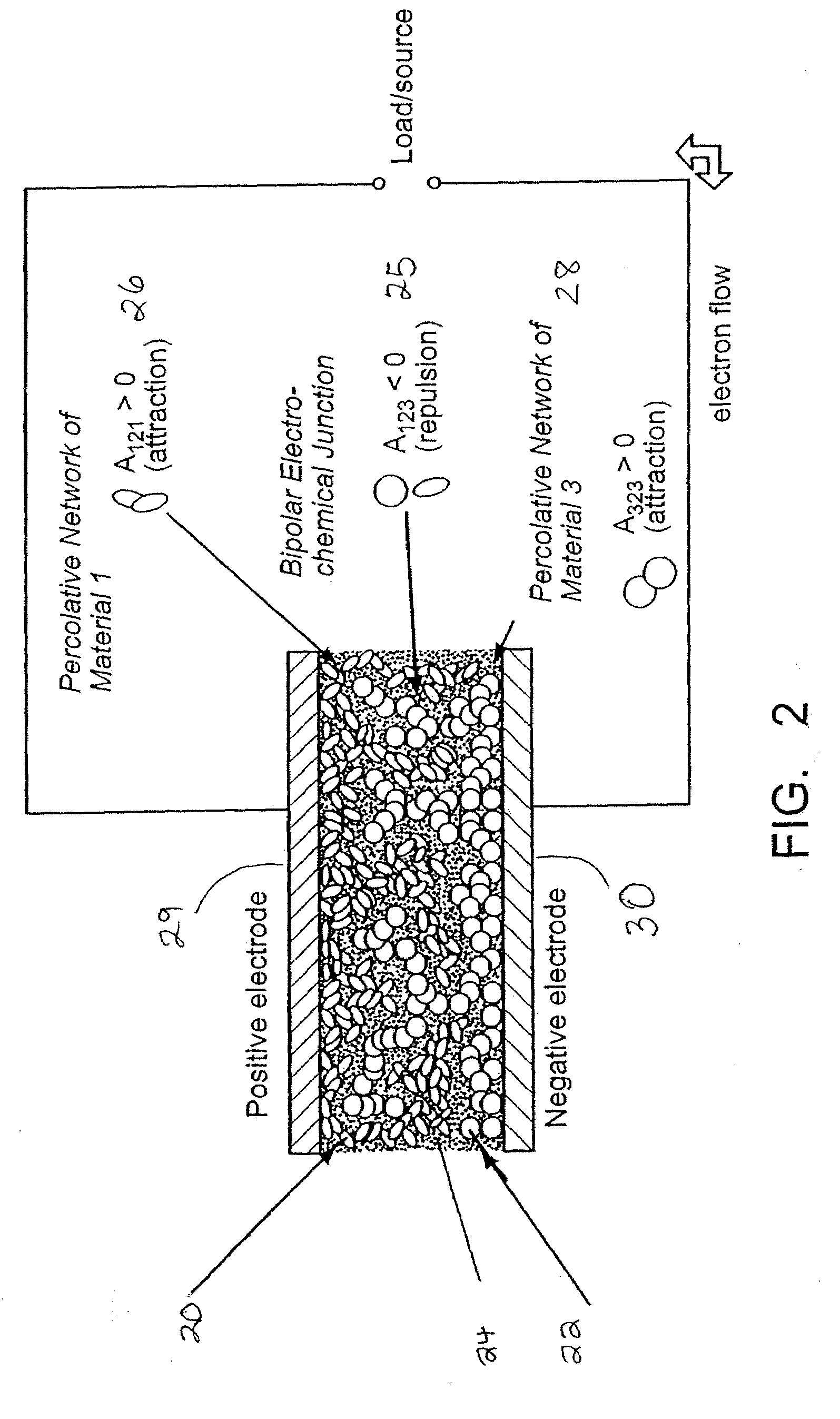Battery structures and related methods
a battery structure and battery technology, applied in the field of bipolar devices, can solve the problems of poor mechanical properties of linear or branched solid polymer electrolytes, and achieve the effect of maintaining physical separation and low viscosity
- Summary
- Abstract
- Description
- Claims
- Application Information
AI Technical Summary
Benefits of technology
Problems solved by technology
Method used
Image
Examples
example 1
Preparation of a Self-Organizing Battery Using a Crosslinked Polyethylene Glycol Dimethacrylate Solid Polymer Electrolyte
[0066]Polyethylene glycol dimethacrylate (PEG-DMA, molecular weight 770) was used as the crosslinkable polymer electrolyte precursor, into which 10 wt. % LiN(SO2CF3)2 salt was dissolved to instill Li ion conductivity, and 1 wt. % AIBN based on functional methacrylate was dissolved to act as initiator for the thermally induced crosslinking reaction. A mixing was conducted under glovebox conditions (Argon, 2, 2O.) Glassy carbon beads (sieved to 20 to 45 μm) were dispersed in the polymer / salt / initiator solution in the volume ratio 1:1 glassy carbon:PEG-DMA via mechanical stirring. A thin layer 500 of carbon / polymer / salt / initiator slurry was then cast onto a thin (5-10 μm) low refractive index conductive composite polymer film 502 on a substrate 510, as shown in FIG. 5. The conductive polymer film included a polytetrafluoroethylene (PTFE) latex acting as the low refra...
example 2
Preparation of a Self-Organizing Battery Using a Crosslinked Polyethylene Glycol Diacrylate Solid Polymer Electrolyte
[0067]Polyethylene glycol diacrylate (PEG-DA) was employed as the polymer electrolyte precursor (10 wt. % Li-TFMSI based on polymer electrolyte, 1 wt. % AIBN based on functional groups.) All other conditions were equivalent to those in Example 1. As shown in Table 1, of five samples produced, 2 exhibited a resistance between the conductive carbon / crosslinked polymer electrolyte composite and the underlying film of >1MΩ, 2 had resistance between 100 kΩ and 1 MΩ, and 1 had a resistance <100 kΩ.
example 3
Preparation of a Self-Organizing Battery Using a Crosslinked Diacrylate / Methacrylate Blend
[0068]A blend of 80 wt. % methoxy(polyethylene glycol)methacrylate and 20 wt. % PEG-DA (80:20 MeOx-PEG-MA:PEG-DA) was employed as the polymer electrolyte precursor (10 wt. % Li-TFMSI based on polymer electrolyte, 1 wt. % AIBN based on functional groups.) All other conditions were equivalent to those in embodiment 1. As shown in Table 1, of five samples produced, all 5 exhibited a resistance between the conductive carbon / crosslinked polymer electrolyte composite and the underlying film of >1 MΩ.
TABLE 1Summary of electrical isolation results between conductivecarbon / crosslinked polymer electrolyte composite and theunderlying conductive polymer film.Level ofPEG-DMAPEG-DMA80:20 MeOx-electricalrunrunPEG-DA:PEG-isolation12PEG-DADA1010100 kΩ-1MΩ2320>1 MΩ2225Total5555
PUM
| Property | Measurement | Unit |
|---|---|---|
| viscosity | aaaaa | aaaaa |
| viscosity | aaaaa | aaaaa |
| viscosity | aaaaa | aaaaa |
Abstract
Description
Claims
Application Information
 Login to View More
Login to View More - R&D
- Intellectual Property
- Life Sciences
- Materials
- Tech Scout
- Unparalleled Data Quality
- Higher Quality Content
- 60% Fewer Hallucinations
Browse by: Latest US Patents, China's latest patents, Technical Efficacy Thesaurus, Application Domain, Technology Topic, Popular Technical Reports.
© 2025 PatSnap. All rights reserved.Legal|Privacy policy|Modern Slavery Act Transparency Statement|Sitemap|About US| Contact US: help@patsnap.com



